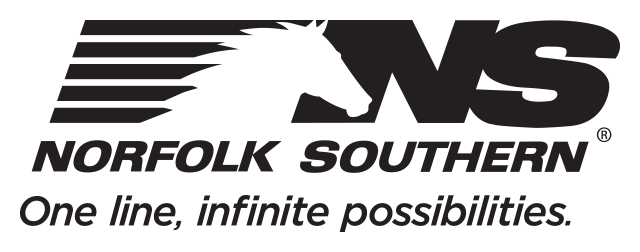Norfolk Southern's Public-Private Partnerships
Our public-private partnerships offer solutions to U.S. transportation needs

Norfolk Southern has led the rail industry in seeking innovative solutions to the nation’s transportation challenges.
In the mid-2000s, we partnered with state and federal officials to create the rail industry’s first multistate public-private partnership on our Heartland Corridor. In the 2005 federal highway reauthorization bill, Congress identified the Heartland as one of 25 transportation projects nationwide with the potential to facilitate international trade, relieve traffic congestion, improve transportation safety, and address critical national economic and transportation needs.
Since then, we forged a public-private partnership to expand capacity on the Crescent Corridor. In addition, we joined with other freight railroads to help fund the CREATE public-private partnership in Chicago, one of the nation’s busiest railroad hubs.
Through these partnerships, federal and state governments contribute a percentage of costs based on public benefits generated. These benefits include jobs and tax revenue; economic development; less congestion and fewer truck-related accidents on interstate highways; reduced maintenance and construction costs of roads and bridges; and a decline in fuel use and greenhouse gas emissions.
Public participation allows large-scale corridor projects to be completed much sooner than they otherwise would be, accelerating the public benefits associated with them.
Selected benefits associated with our three largest public-private partnerships are described below.
Crescent Corridor
As a testament to the corridor’s widespread benefits, the corridor project received endorsement by business and environmental groups, including leading business associations in Alabama, Maryland, North Carolina, Pennsylvania, Tennessee, and Virginia. Joining in support were conservation-minded groups such as the Southern Alliance for Clean Energy, A Greener Gulf Coast, the Southeast Energy Efficiency Alliance, and the Virginia Chapter of the Sierra Club.
The corridor equips Norfolk Southern with truck-competitive service along several major interstates, including I-81, I-85, I-20, I-40, I-59, I-78, and I-75. The corridor improvements will provide rail capacity to annually divert an estimated 1.3 million long-haul trucks from those highways.
In 2013, freight volume on the corridor increased 8 percent over 2012. Rail volume grew by 21 percent in 2012 versus 2011.
Independent studies conducted for the railroad estimate that when fully developed, the corridor has the potential to:
SAVE
- More than 160 million gallons of fuel annually
- More than $500 million in costs associated with traffic congestion
- More than $90 million in highway maintenance
REDUCE
- Greenhouse gas emissions by 1.9 million tons
CREATE OR PRESERVE
- More than 70,000 jobs by 2030
AVOID
- More than $100 million in property damage and injuries from accidents
Heartland Corridor
The Heartland Corridor created a shorter route for moving international freight on double-stack trains between Virginia port terminals and Midwest consumer markets. By eliminating about 25 percent of the miles of the former double-stack route, we’re burning less fuel and reducing greenhouse gas emissions.
The railroad’s Rickenbacker Intermodal Terminal, constructed in Columbus, Ohio, as part of this public-private partnership, has helped attract job-creating warehouse and distribution facilities at a nearby global logistics park, including companies such as Whirlpool, Kraft Foods, and Toys “R” Us.
The Heartland Corridor supports a national goal to grow U.S. export volumes. The company expects business to continue to grow, particularly after the Panama Canal expansion is completed, enabling larger ships to call on East Coast ports. Increased use of the Suez Canal by international container ships offers another avenue of growth.
In 2013, traffic volume on the corridor increased 16 percent over 2012. That rise followed a 26 percent increase in volume in 2012 versus 2011.
CREATE
Known by its acronym, the $3.2 billion Chicago Regional Environmental and Transportation Efficiency project is designed to reduce rail and highway congestion and add freight and passenger capacity in the metropolitan Chicago area. The CREATE partnership involves the U.S. Department of Transportation; the Illinois Department of Transportation; Chicago; the six largest North American freight rail carriers, including Norfolk Southern; and two passenger carriers, Amtrak and Metra.
Chicago is one of the nation’s busiest and most congested rail intersections, with 2,800 route miles of track and about 500 freight and 800 passenger trains passing through daily. It is a key interchange point for domestic and international freight rail traffic moving to and from the East and West coasts. It’s also a hub for Amtrak passenger rail service and Metra commuter trains.
The CREATE improvements, financed by the railroads and public partners, target 70 rail and highway infrastructure projects, including 40 that will reduce delays for Amtrak and Metra passenger trains. Some of the major projects, including the Englewood Flyover, will separate freight and passenger trains to eliminate conflicts and congestion. Other projects will separate rail and highway traffic, resulting in fewer delays, less fuel consumption, and reduced greenhouse gas emissions.

